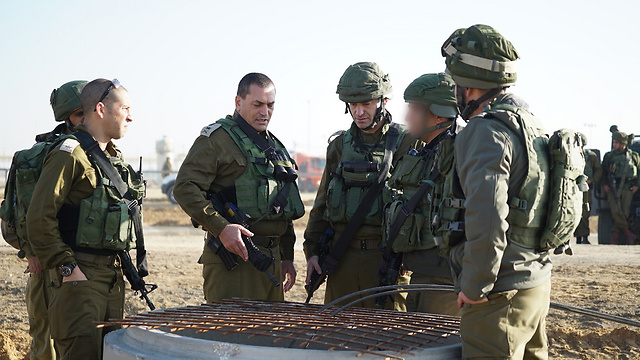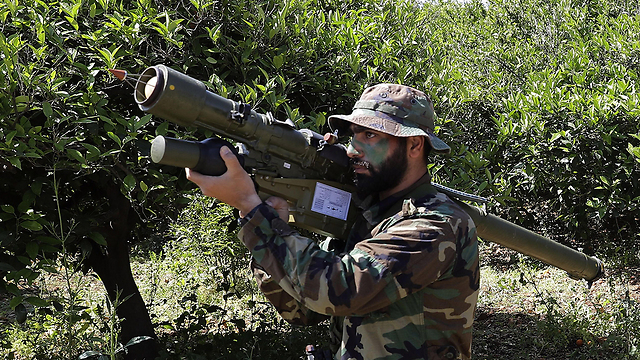
After neutralizing tunnels, IDF faces a new threat
Analysis: Only three and a half years ago, Hamas’ underground attack tunnels seemed like an unsolvable threat; but as Major-General Yoav Mordechai said, ‘the Israeli genius and the Jewish mind found a solution.’ Now, the next mission is to find an operational solution to Hezbollah’s heavyweight mortar shells.
Three tunnels have been uncovered within two months, and Defense Minister Avigdor Lieberman has pledged that Hamas will have no cross-border attack tunnels by the end of 2018. In Operation Protective Edge, for example, Hamas had 32 attack tunnels, including 15 cross-border tunnels which Israel had limited intelligence about.
Since then, the IDF tried to come up with a response in different ways, but the accomplished results can only be seen now through different steps that were taken simultaneously: The first is the underground obstacle being built around the 65-kilometer border fence. The cost of each kilometer of the obstacle is estimated at around NIS 40 million (roughly $12 million)—a total of about NIS 3 billion—and was expected to be completed during 2016, to provide hermetic defense and cut off every tunnel crossing the fence.
The second step is the classified technological solution which costs around NIS 1.2 billion. Only few people are privy to the secrets of how this classified method works. The reports about it are very limited too, to prevent Hamas from finding out about the method that has made it possible to successfully detect tunnels on Israeli territory—leading to a change in the number of tunnels uncovered recently—as well as their route within the Gaza Strip later on.
The third method is the improved intelligence gathering ability on tunnels excavated on the other side, making it possible to locate the tunnel openings. Furthermore, the Air Force has developed a new ability to accurately neutralize tunnels using ammunition dropped from the air. And there you have it: A solution to a problem which seemed intractable only three-and-a-half years ago.
The results, which are impressive on a global scale, prove that when a decision is made and when the required resources are allotted for its implementation, “the Israeli genius and the Jewish mind found a solution,” as Coordinator of Government Activities in the Territories Major-General Yoav Mordechai said Sunday.
That’s exactly what was done in the previous decade with the Iron Dome system, which was initiated by then-Defense Minister Amir Peretz against the Hamas rockets—a problem the IDF’s top echelon considered unsolvable at the time.
Now, the defense establishment should start preparing for the next threat, the heavyweight Borkan mortar shells Hezbollah has armed itself with, which have a range of about 5 kilometers but can carry 200 to 500 kilograms of lethal explosives. Since they could cause enormous damage to bases and communities within that range, we should deal with this threat should now rather than wait for the next war and the report that will follow.












